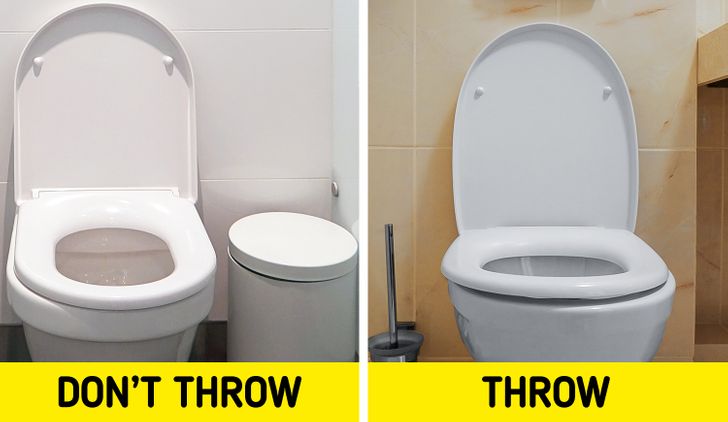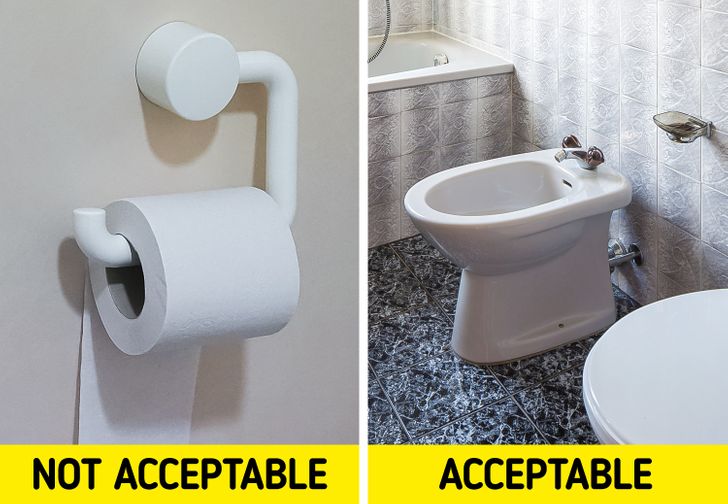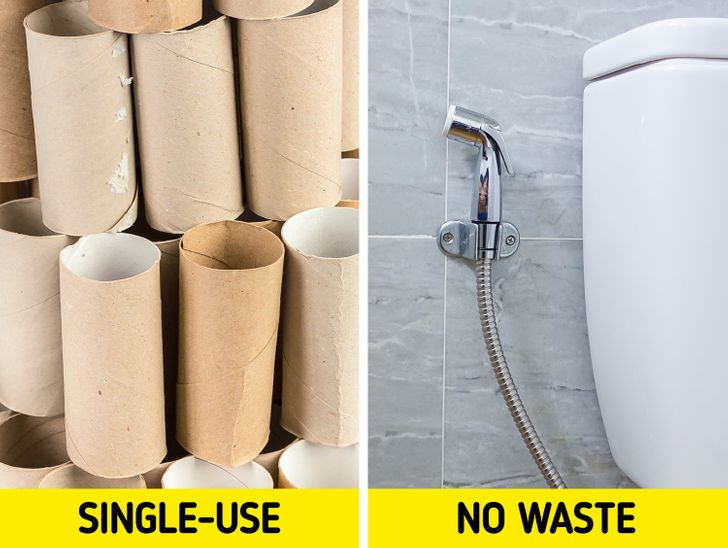we use water here, and how even do pepple use toilet paper!?
Why Most Asians Don’t Have Toilet Paper in Their Homes

In numerous countries around the world, toilet hygiene practices diverge significantly from the common use of toilet paper. A fascinating example of this can be found in countries such as Indonesia, the Philippines, Thailand, and India, where traditional bathrooms often feature a wide, scoop-like plastic implement, known as a “dipper,” which is utilized for personal hygiene. But that’s not all; in Japan, they’ve taken toilet innovation to a whole new level with the development of specialized toilets featuring cleansing seats that offer an experience akin to a bidet.
Diving deeper into this intriguing phenomenon, one can’t help but wonder what drives these alternative practices in Asia, and it turns out there’s a multitude of reasons, both cultural and medical, that shed light on this unique approach to personal hygiene.
Culturally, many of these practices are deeply rooted in tradition and local customs. In countries like India, for instance, the use of water instead of toilet paper can be traced back centuries, as it aligns with the principles of cleanliness and purity outlined in ancient texts. Similarly, in Indonesia and the Philippines, the practice of using a dipper and water is not only practical but also culturally significant, reflecting a connection to the environment and a holistic approach to hygiene.
Moreover, medical considerations play a pivotal role in the preference for water-based hygiene methods. In regions where certain waterborne diseases are more prevalent, such as Southeast Asia, the use of water for cleaning is seen as a safer and more effective way to prevent contamination and maintain personal health. The feeling of cleanliness and freshness that water provides can also be psychologically reassuring, contributing to its popularity.
Additionally, the invention of advanced toilet technology, like the aforementioned Japanese cleansing seats, has further bolstered the adoption of alternative methods. These innovations not only provide a luxurious and efficient cleansing experience but also align with Japan’s penchant for cutting-edge technology.
The use of toilet paper in Japan, even in toilets equipped with advanced bidet and washlet functions, reveals interesting cultural and practical aspects of bathroom etiquette in the country.
In Japan, toilet paper is an essential part of the bathroom experience, and it’s common practice to use it alongside the sophisticated bidet and washlet functions found in many Japanese toilets. These high-tech toilets offer a range of features, including water jets for cleansing, warm air dryers, and even heated seats, making them incredibly efficient and hygienic.
Despite these advanced features, toilet paper continues to be a preferred choice for many Japanese individuals. It serves several purposes, such as drying after using the bidet or addressing any residual moisture, ensuring a completely comfortable and dry experience.
However, an essential aspect of toilet paper use in Japan is the proper disposal method. Unlike some countries where toilet paper is routinely flushed down the toilet, in Japan, there’s a distinct protocol. Users are instructed to throw used toilet paper directly into the toilet after use. However, it’s crucial to emphasize that only toilet paper should be disposed of in this manner. Other items, such as feminine hygiene products, tissues, or wet wipes, should be placed in the small trashcan typically provided within the cubicle. This clear distinction helps maintain the functionality of the plumbing system and prevents blockages or overflows.
The Japanese culture of cleanliness and consideration for others extends to bathroom etiquette as well. Users are encouraged to check the area around the toilet for anything they may have dropped during their visit. This practice not only contributes to a clean and orderly environment but also ensures that nothing obstructs the proper functioning of the toilet.
Lastly, the reminder to flush the toilet is a common courtesy that ensures the toilet is ready for use by the next person. It’s a simple but important step in maintaining the hygiene and convenience of public or shared restroom facilities.
1. The plumbing is not made for paper.
The disparities in water management systems between many Asian countries and the Western world are quite pronounced and have notable implications for daily life, particularly when it comes to the seemingly mundane act of disposing of toilet paper. In these regions, where the infrastructure for waste disposal and sanitation may not be as advanced as in the West, a different approach to personal hygiene and toilet usage has emerged.
One of the most striking differences lies in the practice of not flushing toilet paper. This may come as a surprise to visitors from Western countries, where it’s customary to flush toilet paper without a second thought. However, in many Asian countries, this practice is discouraged due to concerns over the potential strain it can place on less robust sewage and drainage systems. Flushing toilet paper can lead to clogs and blockages, which can be not only inconvenient but also unhygienic, as these blockages can result in backups and overflows.
As a result, alternative methods have become the norm. People in these regions have embraced a variety of alternatives to toilet paper, such as water bowls, bidets, or bidet showers. These devices provide a more water-efficient and sanitary means of personal hygiene. The use of water not only ensures thorough cleanliness but also aligns with the preference for freshness and cleanliness in many Asian cultures.
Moreover, visitors to these regions may notice a unique feature in their bathroom facilities — a bin placed conspicuously near the toilet. Contrary to expectations, this bin is not for general waste disposal but rather serves a specific purpose. In many cases, it’s meant to collect used toilet paper. This practice further underscores the caution exercised in preserving the functionality of plumbing systems. Rather than risking blockages by attempting to flush paper, individuals dispose of it in the bin provided.
Understanding these differences in water management systems and toilet practices sheds light on the importance of cultural sensitivity and adaptability when traveling or living in diverse parts of the world. It also underscores the significance of infrastructure development and how it can impact even the most basic aspects of daily life, from personal hygiene to waste disposal.
2. It can cause irritation.
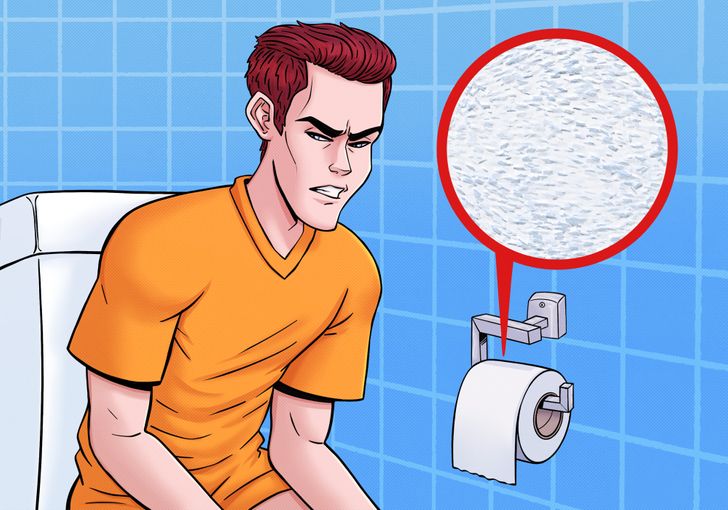
The potential for toilet tissue to cause irritation is a common concern that many individuals face, and this issue becomes particularly pronounced when the toilet tissue itself is of a coarse or rigid quality. For those who have certain medical conditions, such as hemorrhoids or fissures, this irritation can be even more pronounced and discomforting.
Hemorrhoids, for example, are swollen blood vessels located in the rectal area. They can be quite painful and sensitive. When abrasive toilet tissue is used to clean after bowel movements, it can exacerbate the discomfort and even cause bleeding or further inflammation. Similarly, fissures, which are small tears in the lining of the anal canal, can be incredibly painful and prone to irritation. Rough toilet tissue can worsen these tears and hinder the natural healing process.
Herein lies the wisdom of using water as an alternative. Water, in comparison to toilet tissue, is inherently gentle. When employed for personal hygiene after using the toilet, it offers a soothing and cleansing effect. It can help alleviate the irritation and reduce the pressure in the perianal area, where hemorrhoids and fissures often cause discomfort. The gentle flow of water not only ensures thorough cleanliness but also promotes a sense of relief and comfort that can be particularly beneficial for individuals with these conditions.
In some cultures and regions, this practice of using water for personal hygiene is deeply ingrained and has been in use for generations precisely because of its soothing and gentle properties. It’s an excellent example of how different cultures have developed unique and effective methods of personal hygiene based on their understanding of human anatomy and well-being.
The choice between toilet tissue and water for personal hygiene isn’t merely a matter of preference; it can significantly impact an individual’s comfort and health, especially for those dealing with specific medical conditions like hemorrhoids or fissures. By opting for the gentler alternative of water, individuals can reduce the risk of irritation and promote a more comfortable and soothing experience in the perianal area.
3. It may lead to urinary infections.
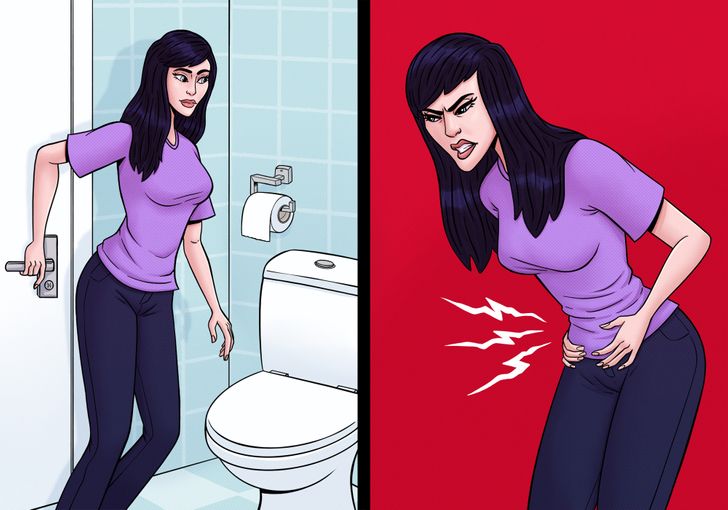
4. The use of tissue in the toilet has cultural meaning.
The use of tissue, or rather the choice of personal hygiene practices, holds profound cultural significance in many parts of the world. This is particularly evident in the practices of Muslim countries, where the act of washing after defecation carries great cultural and religious importance.
It is a fundamental aspect of Islamic toilet etiquette, rooted in the principles of cleanliness and purity.
In the Islamic faith, cleanliness is highly valued, and this extends to all aspects of life, including personal hygiene and sanitation. The practice of “istinja” is not merely a matter of hygiene but is deeply intertwined with cultural norms. It reflects the broader Islamic principle of Taharah, which emphasizes the state of physical and spiritual purity. In Islam, maintaining this state of purity is considered essential before engaging in acts of worship. It is seen as a way to maintain physical and spiritual purity before engaging in acts of worship.
The process of istinja typically involves the use of water, either from a container or a bidet-like apparatus, to cleanse the anal area thoroughly. This ritualistic cleansing is an integral part of the daily routine for Muslims and is regarded as an essential step in preparation for religious rituals.
Interestingly, a similar cultural practice can be observed in India. Despite its diverse religious and cultural landscape, India shares a common thread with Muslim countries in its emphasis on personal hygiene and the use of water for cleansing. In many Indian households, it is customary to use water along with soap or other cleansing agents to ensure thorough cleanliness after using the toilet.
This practice, often referred to as “lota” or “mug” usage, involves the use of a small container or vessel filled with water for washing. The idea is to achieve a high level of cleanliness and freshness, which is culturally valued and considered essential for physical comfort and overall well-being.
The cultural significance of these practices extends beyond their religious or practical aspects. They reflect a deep-seated belief in the importance of maintaining both physical and spiritual purity, emphasizing the holistic connection between cleanliness and one’s state of mind and body.
The use of tissue or water for personal hygiene is not merely a matter of practicality but carries profound cultural and religious meaning in many parts of the world. In Muslim countries and India, these practices underscore the significance of cleanliness in daily life, reflecting the broader cultural values and traditions that shape individuals’ attitudes and behaviors towards hygiene and well-being.
5. It’s not hygienic enough.
The preference for water over toilet tissue as a means of personal hygiene is rooted in the belief that water offers superior cleanliness and hygiene. This preference is not merely a matter of personal choice; it is supported by practical and hygienic considerations that highlight the limitations of toilet tissue.
One of the primary concerns with using toilet tissue is its effectiveness in removing fecal matter thoroughly. Toilet paper, no matter how soft or high-quality it may be, can only achieve a surface-level cleaning. It often smears fecal matter rather than completely removing it, which can lead to lingering bacteria and unpleasant odors. In contrast, water has the advantage of providing a more comprehensive and thorough cleaning by physically washing away any residue.
Moreover, wiping with toilet paper alone may not always be sufficient, especially for individuals with specific hygiene needs. It’s not uncommon for people to experience issues such as hemorrhoids, fissures, or irritation in the anal and perianal areas. For these individuals, the friction created by wiping with dry toilet paper can exacerbate discomfort and potentially lead to further irritation or injury. Water, in comparison, offers a gentle and soothing cleansing action that minimizes the risk of aggravating such conditions.
The perception of water as more hygienic also aligns with cultural and regional practices around the world. In many cultures, particularly in Asian and Middle Eastern countries, the use of water for personal hygiene after using the toilet is deeply ingrained and has historical significance. It’s seen as a way to achieve a higher level of cleanliness and freshness, which is valued both for its practical benefits and its cultural importance.
In recent years, the adoption of bidets, which provide a controlled stream of water for cleansing, has gained popularity in various parts of the world. This trend underscores the growing recognition of the hygienic advantages of water-based cleansing methods. Bidets offer a convenient and effective way to experience the benefits of water without the need for elaborate plumbing modifications.
6. It’s not environmentally-friendly.
According to expert analysis, in the USA only, 36.5 billion rolls of toilet paper are used every year, representing the pulping of some 15 million trees. This also requires huge amounts of water, bleach, energy, and packaging materials. Using other means like a bidet, as the experts believe, is much more environmentally-friendly.
The environmental impact of using toilet paper is a topic that warrants a closer examination, as it extends far beyond the simple act of wiping. To understand the broader ecological implications, it’s essential to delve into the statistics and consider the alternatives, such as bidets, that experts often advocate for their environmental friendliness.
In the United States alone, a staggering 36.5 billion rolls of toilet paper are consumed annually. This astronomical figure represents a significant ecological footprint. The production of toilet paper necessitates the pulping of approximately 15 million trees each year. This is a substantial deforestation impact, which not only disrupts ecosystems but also contributes to the reduction of carbon-absorbing forests, exacerbating climate change.
The use of bleach in the production of toilet paper, while contributing to its desirable white appearance and soft texture, raises significant concerns, particularly for women. Bleach is a potent chemical with the potential to cause health issues when it comes into contact with the skin and, in some cases, can even enter the bloodstream, where it can wreak havoc throughout the body.
Toilet paper, like many paper products, is bleached to achieve its pristine white color and softness. However, bleach is a toxic substance, and when it comes into contact with the skin, it has the potential to be absorbed. This can be especially concerning for women, as their genital and perianal areas are more susceptible to contact with toilet paper during bathroom use.
One of the primary issues with bleach exposure is its potential to disrupt the body’s natural balance of bacteria, which plays a crucial role in maintaining a healthy pH level in sensitive areas. An imbalance in pH levels can create an environment conducive to infection, leading to discomfort and health problems.
Moreover, the bleaching process used in the production of toilet paper can result in the formation of dioxins. Dioxins are highly toxic compounds that can have a range of detrimental effects on the human body. They have been linked to developmental issues, reproductive problems, compromised immune function, and disruptions in the endocrine system, which regulates hormone production and balance. The presence of dioxins in toilet paper, even in trace amounts, poses a significant health concern, especially given the frequent and intimate contact that women have with toilet paper.
Comparatively, alternatives like bidets offer a more environmentally-friendly solution. Bidets use water to cleanse, eliminating the need for toilet paper altogether in many cases. This reduction in paper consumption directly translates into fewer trees being cut down, less water being used in production, and a decreased demand for energy and bleach. Moreover, bidets do not generate additional packaging waste associated with toilet paper rolls.
Furthermore, bidets are increasingly designed with water-saving features, such as adjustable pressure and temperature settings, which minimize water usage. Modern bidet technology strives to strike a balance between cleanliness and sustainability, making them an attractive option for those who are environmentally conscious.
The use of toilet tissue versus alternative methods for personal hygiene presents a multifaceted set of considerations and challenges. From the practical aspects of plumbing systems to the potential for irritation and health risks, as well as the cultural significance and environmental impact, it’s clear that the choice between toilet tissue and alternatives is not merely a matter of personal preference. It involves a complex interplay of factors that touch upon hygiene, health, culture, and sustainability.
The limitations of plumbing systems, especially in many Asian countries, underscore the need for alternative practices such as water-based methods like bidets, which are more compatible with these systems and help mitigate sanitation issues.
Additionally, the potential for irritation and the risk of urinary infections emphasize the importance of effective and gentle cleaning methods. Water, with its thorough cleansing action, emerges as a viable solution to these concerns, particularly for individuals with specific health considerations.
Furthermore, the cultural significance of these practices, as seen in Muslim countries and India, illustrates how deeply ingrained hygiene customs can be in society and the role they play in shaping daily routines.
From a broader perspective, the environmental impact of toilet paper consumption is significant, given the resources required for its production and the waste it generates. This has led experts to advocate for more sustainable alternatives like bidets as a means to reduce the ecological footprint associated with personal hygiene.
Comments
I know a lot of people that prefer bidets bc toilet paper doesn't clean "down there" good enough
People like that need education.
C'est recommandé par l'islam et une habitude musulmane
I use baby wipes no toilet paper 🧻 ewww
We don't get alot of bidets in the UK and I never knew this about Asian countries toilet habits, however when explained it does make sense. Toilet paper is main way of wiping ourselves after defecating over here. Personally we use toilet wipe wipes which are more hygienic, however there is a question about how quickly they biodegrade and can only use one per flush incase it blocks the soil pipes. Our bathrooms aren't big enough for bidets aswell although I did see a toilet with and added shower thing which I suppose is to save on space. Two questions though... at what point do you know you are 'clean'? Also, how do you not get water all over your clothes? I am clumsy, haven't got good aim either and not afraid to admit it... I can imagine walking out out the bathroom with wet patches over my clothes!! These are genuine questions as I have never used water that way and I am curious.
Bloomjng autocorrect.... meant to say that we personally use toilet wet wipes.
Tis easy..bidet does do a deep clean enough that you can feel it down there..
And clog up the sewage system
Actually I use Tesco toddler wipes which has been certified by the UK waterboard to be 'flush safe'... so they do not clog up the sewage system... other wipes and ofcourse baby wipes that aren't meant to flush down the toilet will clog up the sewage system but the ones I use don't and are safe to flush!
We use bidet to clean "down there" and toilet paper to wipe it dry. Then use soap to wash our hands. You should try to use our public toilets and you'll know.
You don't need a bidet to occupy your floor space. Just a pipe/hose is enough. Check for "bidet shower" online. This is how we do in Muslim countries (I'm not Muslim)
Right. Might make u look like u peed on ur self?
Is true
lol... no, the toddler wet wipes I use aren't that wet!! 🤣... by the time you've pulled your pants up you're perfectly dry and safe from embarrassment! lol
You can use the toilet paper to dry.
Hi Lyn, I'm from Finland and we have a bidet shower pretty much in every toilet wherever you go: homes, hotels, restaurants, service stations. We've been using them for decades. Nobody here has that extra toilet seat to take up space in bathrooms. The shower is handy and very easy to use :)
When you use the bidet, you actually use your hand to clean yourself. Like you would in the shower. Hence, the one hand eating rule in India. You never eat with the hand that you wash yourself with.
There are also many toilets with a built-in bidet.
We have toilet paper, tissue or wet wipes at home. Even man or woman always bring outside home. You know we prefer to use water first then wipe it with tissue most are woman. Then wash hand after alcohol. Thank you.
I don’t think using only toilet paper is hygienic enough so we use water and then use toilet paper to dry.
That's the way I would like to wipe
Some people in Nigeria do use toilet papers to clean down there, but some others use water. Trust me, its better
I come from Viet Nam, a nation of Asian and here we use bidet rather than tissue. For me, I feel horrible when I use toilet paper after defecation :))
I am Vietnamese too
Related Reads
12 Stories Where One Plot Twist Changes Everything

20 Hollywood beauties who used to look much more ordinary

17 Situations Where Guests Took the Words “Make Yourself at Home” Too Literally

21 Everyday Things That Prove Japan Isn’t Just a Country, but a Totally Different Planet

3 Generations of 10 Celebrity Dynasties Whose Women Have Evolved to Perfection

10 Star Couples We Couldn’t Think Would Be Together, but It’s So Cool to See Them Happy

Why You Need to Only Wash 3 Body Parts, According to a Study

12 Moments That Remind Us Kindness Is the Superpower We Forgot We Had

18 Stories That Prove a Cleaner’s Job Is About More Than Just Dusting

I Refused to Help My Sister Save Her Dying Kid, My Money Isn’t a Family Tradition

I Thought My Son’s Wedding Was Perfect, but My DIL Says My Dress Ruined Everything

16 Moments That Remind Us to Stay Kind Even If the World Turns Ice Cold

